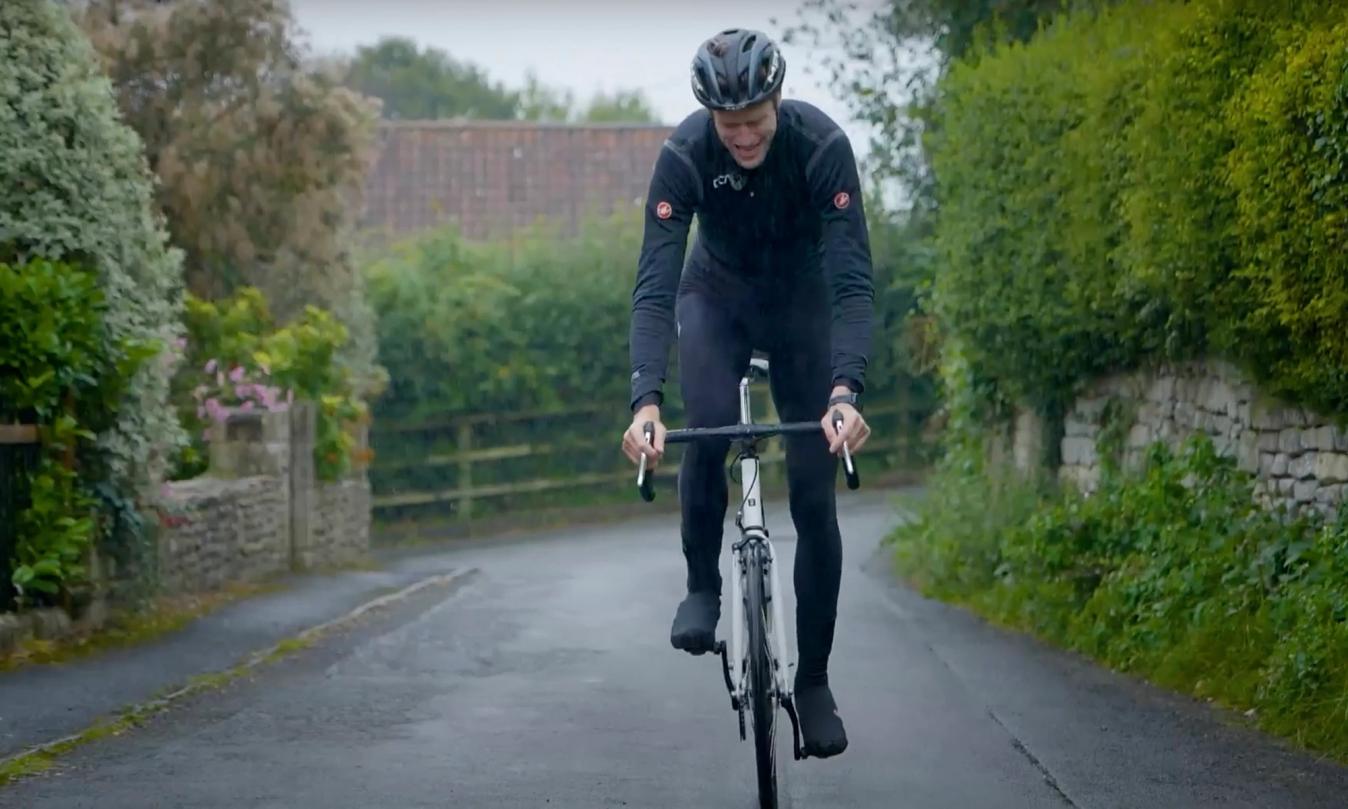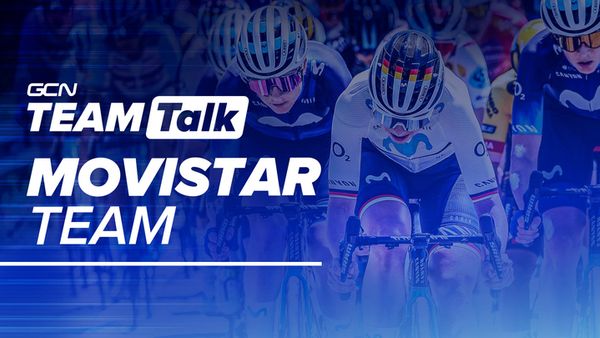Is a fixed gear bike a good training tool?
Can riding a fixie offer you training that you just can't replicate on a geared bike? Conor is on a mission to find out
Alex Hunt
Junior Tech Writer
A fixed gear bike - or ‘fixie’ as they are affectionately known - is a bike that has one gear that is fixed directly to the rear wheel hub. With no freewheel, whenever the wheels are turning so too are the cranks, but is there any benefit to this, or is it just making your riding harder for no performance gains?
There is no arguing that a fixie has a few potential benefits as an addition to your training. The lack of freewheel and gears means that your are forced to adapt to the bike rather than the bike adapting to your needs. Although it can be tough, letting the fixed gear train your legs can be a great way of developing your muscular power, smooth pedalling and your maximum cadence.
.jpeg?w=1348&auto=format)
© GCN
A fixed gear bike has one gear that is fixed directly to the back wheel, it does not have a freewheel so if the bike is moving, the pedals are turning
The most important thing to get right that will make your experience on a fixie enjoyable is to select a gear that is going to work for the riding you do and your fitness level. As you might expect, there is going to be an awful lot of compromising to find the right gear as it needs to be small enough to allow you to start without giving yourself a hernia as well as allowing you to ride without your legs going round in a blur. In this video, Conor is using a 44 tooth chainring and a 15 tooth sprocket at the back. Using something like Bikecalc.com's gear calculator will help determine which gear is best for you.
Why would you ride a fixie?
Fixed gear bikes are popular for lots of reasons, including an underground movement of cycle couriers that race across cities to deliver packages - in fact, we made a documentary about this subculture over on GCN+. The main reason most riders reach for a fixie is simply because of the ease of maintenance and simplicity of the bike.

© GCN
Fixed gear bikes are the ultimate in simplicity as there is very little to maintain or replace
Fixed gear bikes tend to be robust and dependable bikes, because there isn’t all that much to them. With no shifters, derailleurs or cassettes to worry about, keeping a fixed gear bike running at its best is no hard matter.
How can a fixie benefit my riding?
The very nature of a fixed gear bike means that if the wheels are turning then your legs are going to be moving too. It is this inability to stop pedalling that offers some benefits to the rider, one of which being that it increases your bike handling.
When riding a fixed gear bike you cannot keep your inside pedal up as you go round a corner to make sure that you won’t clip a the ground. Instead you have to learn the limits of your bike and how fast you can enter a turn and how far you can lean the bike. This spatial awareness of what you can do and preempting what is coming up will develop your handling skills no end, although it can be a little scary at first.
Some of the smoothest pedalling riders in the world such as Filippo Ganna, Elia Viviani and Lotte Kopecky all come from a track background and that is no coincidence. Track cyclists all use fixed wheel bikes in the velodrome and it is this that hones their buttery smooth pedalling technique.
Since there is no room to back off the pedals, you are forced to pedal perfect circles the whole way through the stroke, increasing your pedalling efficiency. This extends even further, to riding at high speeds - if you are riding a fixie down a hill your leg speed is going to have to increase as your speed goes up. This is going to train your body to fire your muscles faster and faster making your maximum cadence will go through the roof, perfect for those sprint efforts for the cafe sign.

© GCN
Every start requires a big muscular effort that will develop you peak muscular power
The final main advantage of a fixed wheel bike is that getting up to speed is really hard work. Because you are in such an over geared position, getting the bike moving is going to take a lot of muscular effort. Much like we see at the start of a track sprint event, there is no compensating with an easy gear, and it is a real test of sheer strength to get the bike moving underneath you. Doing this multiple times throughout a ride will be a great strength session to develop your peak muscular power.
It is also worth addressing the elephant in the room at this point: yes, technically you could ride your geared bike in one gear and get some of the benefits, like starting in a bike gear and riding at high cadences. However, it is the fact that you have no other choice with a fixie that makes the benefits more pronounced. When you are really tired towards the end of a ride you can’t just put it in an easier gear, it forces you to make those big efforts and adapt your riding.
What are the drawbacks?
With all the positives that riding a fixed gear bike can have, it is not all plain sailing and there are some drawbacks that do limit what a fixie is suitable for.
The most obvious drawback is that a fixed gear bike is not going to work very well if you ride somewhere with lots of rolling hills. It is surprising how hard the shallowest of gradients can become when fixed into one gear and there does become a point when it just simply isn’t possible to turn the gear over and keep the bike moving.

© GCN
Riding downhill of a fixed gear bike can be terrifying and not something to tackle lightly
Equally, if there are steep or technical descents a fixed gear bike is going to be a potentially fearful ride as your legs will have to match the speed you are travelling, as well as having to pedal through every corner. If there are long steep climbs and descents where you ride, a fixed gear bike might not be the right tool for the job as they are best suited to city riding or on flat predictable routes.
Due to the nature of the fixed wheel and the extra forces it puts on your body, they are not a great choice for anyone who suffers pre-existing knee issues as the high power, low cadence needs of the bike to get it up to speed are only going to exaggerate these issues.
Our verdict
Fixed wheel bikes definitely serve a purpose, offering training benefits that are hard to come by on a typical geared bike. The most notable is the efficiency it will develop in your pedalling technique across a range of cadences as well as the muscular conditioning from being forced to ride at low cadences and the standing start efforts.
There are some drawbacks to riding a fixie, especially if you live somewhere hilly, but it could be a great addition to your training if you are looking for something to freshen it up.










